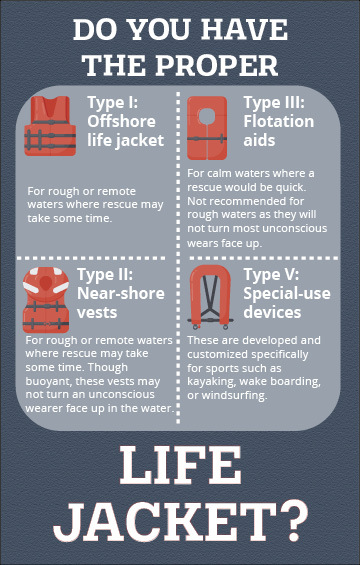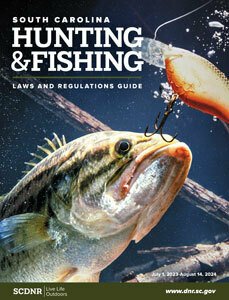Freshwater Nongame Fishing Regulations
Freshwater Nongame Fish
Freshwater nongame fish are any freshwater fish species not classfied as game fish.
General Information
- Nongame fish may be taken with any lawful nongame fishing device. Nongame fish may also be taken with hook and line. A fisherman may only use four rods and reels. A fisherman fishing from a boat may use an unlimited number of rods and reels if all persons in the boat 16 years and older have valid fishing licenses.
- Nongame fishing permits and tags may be purchased from SCDNR only. Applications may be obtained at
www.dnr.sc.gov or by calling 803-734-4DNR. - Nongame fishing permits and tags are required, in addition to a valid South Carolina recreational fishing license (also applies to youth under 16), to use the following devices for recreational purposes:
- up to 1 trotline with not more than 50 hooks
- not more than 50 set hooks
- not more than 50 jugs
- up to 2 traps
- 1 gill net no more than 100 yards in length or 3 gill nets, none of which exceed 30 yards in length (This does not apply to shad and herring. See Nongame Device Limits by Location).
- up to 2 eel pots
- With a valid South Carolina fishing license and no additional tags or permits, archery equipment, cast nets, crayfish traps (5 or less), gigs, hand grabbing, minnow seines, minnow traps, landing (dip) net and spears may be used in freshwaters except in Game Zone 1 and lakes owned or managed by the DNR to take nongame fish. This requirement applies to all freshwaters of the state inland of the saltwater-freshwater dividing lines, except privately-owned ponds.
- Nongame fishing devices are not allowed in certain waters. The maximum number of devices allowed per area is shown in the Nongame Device Limits by Location (See Nongame Device Limits by Location).
- A tag must be attached to the device for which it was issued, and each permit and tag identification receipt must be in the licensee’s possession while engaging in the activity.
- On all waters of the state only 2 blue catfish over 32 inches with a possession limit of 25 per person per day.
- Native freshwater mussels may not be taken without a permit from SCDNR. The non-native Asian clams, also known as Corbicula may be taken. Contact the Freshwater Fisheries Section at 803-734-3891 for permits.
- Game fish must be immediately released if caught by net or trap or any other device used for catching nongame fish.
- Federal law requires passenger for hire service operating on U.S. navigable waters to comply with minimum federal safety and personnel licensing laws and regulations. Vessels that are carrying paying passengers must have a Captain that is USCG Licensed/ USCG Vessel Inspected. Please contact USCG for more information 1-888-427-5662.
Shad/Herring
Includes American and hickory shad and blueback herring.
- To take shad for recreational purposes by hook and line, cast net, or skimbow net in waters of the state, a person must have the appropriate freshwater or saltwater recreational fishing license.
- American shad and herring may be harvested by skimbow net from February through April. Only 10 shad per person per day or 1 US bushel of herring per person per day, except in the Santee River and Rediversion Canal (which is 20 shad per person per day), can be harvested. Gill nets are allowed to harvest American shad and herring for commercial use. If fishing gill nets recreationally, one must adhere to the recreational limits.
- It is unlawful to possess saltwater or freshwater game fish or fishing tackle capable of taking saltwater or freshwater game fish while taking or attempting to take shad or herring with gillnets.
- It is unlawful to take shad by hook and line or by skimbow net while operating or possessing any commercial fishing equipment for taking shad or herring.
- Herring fishery area closures: Herring fishery closed in the Savannah River seaward of the Augusta Diversion Dam. All rivers in the Winyah Bay River System (which are all waters of Winyah Bay east of a line running south from the southern tip of North Island to the eastern tip of Sand Island, and extending to the mouths of the Sampit, and Waccamaw Rivers) are closed to herring fishing, except for the Great Pee Dee River.
- Herring fishing is prohibited within one hundred feet of the fish lift exit channel at St. Stephens Powerhouse.
- See detailed shad & herring info in Shad & Herring Fishing Regulations.
Commercial Fishing
- A commercial freshwater fishing license must be in possession to take nongame fish by any method from public waters and sell or offer for sale such nongame fish, and/or fish with the following nongame fishing devices:
- 6 or more crayfish traps
- 3 or more eel pots
- 2 or more hoop nets
- 3 or more traps, or
- 2 or more trotlines or fish trotlines with more than 50 hooks.
- 4 or more gill nets (or a total of more than 100 yards of net). (This does not apply to shad and herring. See Shad & Herring Fishing Regulations.)
- Strikers are defined as persons other than the licensed freshwater commercial fishermen, who under immediate supervision assists a licensed commercial freshwater fisherman, but does not use separate nongame fishing devices from the vessel engaged in commercial fishing. A striker is not required to have a commercial or recreational freshwater fishing license.
- On all waters of the state only 2 blue catfish over 32 inches with a possession limit of 25 per person per day.
- To qualify for a resident commercial saltwater fishing license, one must have been a resident of this state for the past 365 consecutive days and furnish proof to SCDNR at the time of application.
Markers & Identification of Nongame Devices
- Trotlines, traps, eel pots, gill nets, and hoop nets must be marked with a white floating marker not less than a capacity of one quart and not more than a capacity of one gallon and must be made of solid, buoyant material that does not sink if punctured or cracked. A floating marker must be constructed of plastic, PVC spongex, plastic foam, or cork. A hollow buoy or float, including plastic, metal, or glass bottles or jugs, must not be used, except that a manufactured buoy or float specifically designed for use with nongame fishing devices may be hollow if constructed of heavy duty plastic material and approved by SCDNR. The owner's name and SCDNR customer identification number must be legible on each of the white floating markers. Both commercial and recreational fishermen shall comply with provisions of this title pertaining to the marking and use of a nongame fishing device. A trotline must be marked on both ends.
- A commercial trotline must be marked at intervals of every 50 hooks. A commercial trotline which uses fifty or fewer hooks must be marked at intervals of 25 hooks. A recreational trotline must be marked at intervals of every 25 hooks. Each interval float must be 'International Orange' in color.
Bait
- No game fish (except bream, excluding redbreast, cut into two or more equal parts), live bait or any bait other than bait listed below shall be used with trotlines, set hooks and jugs: soap, doughballs, shrimp, grapes or meat scraps (which may not include insects, worms and other invertebrates).
- On the Edisto, Black, Sampit, Great Pee Dee, Little Pee Dee, Lumber, Lynches and Waccamaw Rivers, live nongame fish and bream, excluding redbreast, may be used with single-barbed set hooks that have a shank-to-point gap of fifteen-sixteenths inches or greater.
- On the Black, Great Pee Dee, Little Pee Dee, Lumber, Lynches and Waccamaw rivers, live nongame fish and bream, excluding redbreast, may be used on trotlines having not more than 20 hooks with a shank-to-point gap of fifteen-sixteenths inches or greater.
- However, it is unlawful for a person to have in possession more than the lawful creel limit of bream while fishing with nongame devices on these rivers.
- There are no restrictions on the type of bait permissible in traps or eel pots, except that no game fish or parts thereof shall be used as bait.
- Except for bait lost while fishing, it is unlawful to intentionally release any aquatic species, including bait, regardless of the stage of its life cycle, into the waters of this State without a permit from SCDNR.
- It is unlawful to use any nonindigenous fish as bait that is not already established in the water body being fished except the following minnows: fathead minnows, golden shiners, and goldfish, including ‘black salties’. Except for bream (other than redbreast), no other game fish is allowed to be used as bait, provided, trout are allowed to be used as bait only on Lakes Hartwell, Russell, Thurmond, Tugaloo, Yonah, Stevens Creek Reservoir, and the Savannah River. When using game fish as bait to catch fish recreationally they must be included in the daily creel limit.
- There are no restrictions on the type of bait permissible in traps or eel pots except that no gamefish or parts thereof shall be used as bait.
Prohibited Areas
- Nongame fishing devices of any kind may not be used in SCDNR State Managed Lakes.
- Nongame fishing devices are not allowed in Game Zone 1.
Prohibited Practices
- Possession or use on the freshwaters of this state of any device or gear designed or used to catch nongame fish not authorized by law is prohibited. Nongame fish may not be taken by explosives, electrical devices, poison or similar means.
- Possession of game fish is prohibited while fishing traps, trotlines, or other nongame fish devices except cast nets and landing nets.
- It is unlawful for any person to tamper with, fish, or use in any manner the nongame fishing device or gear owned and tagged by another person, or to take from any such device or gear, any fish caught therein. No fishing device shall be used, placed, set or fished so as to create a hazard to boating.
- No trotlines, traps or eel pots shall be placed within 200 yards of any permanent man-made structure on Lakes Marion and Moultrie nor placed anywhere in the Diversion Canal connecting Lakes Marion and Moultrie, the Tailrace Canal nor the area known as the Borrow Pit (also known as “Bar Pit”) in Clarendon County.
- Nongame devices, such as set hooks, may not be attached or secured to any vegetation or structure on the Congaree National Park property bordering the Wateree or Congaree Rivers. Rules and regulations concerning the Congaree National Park may be obtained from the National Park Service at 803-776-4396 or at
www.nps.gov/cong .
Penalties
- The boat, motor, fishing gear and fish of any person who is charged with unlawfully fishing, using or having in possession a gill net or hoop net on any freshwater lake or reservoir shall be confiscated.
- Any person who tampers with any non-game fishing device with intent to damage or to make it ineffective for the purpose of taking fish shall be fined not less than $100 nor more than $200 or imprisoned for not more than 30 days, and for stealing a device or fish caught in the device shall be fined not less than $500 nor more than $1,000 or imprisoned for not more than 6 months or both.
- Upon the conviction of any commercial freshwater fisherman of illegal possession of game fish or the sale or traffic in game fish, SCDNR shall suspend such person’s license or privilege to fish in this state for a period of one year.


